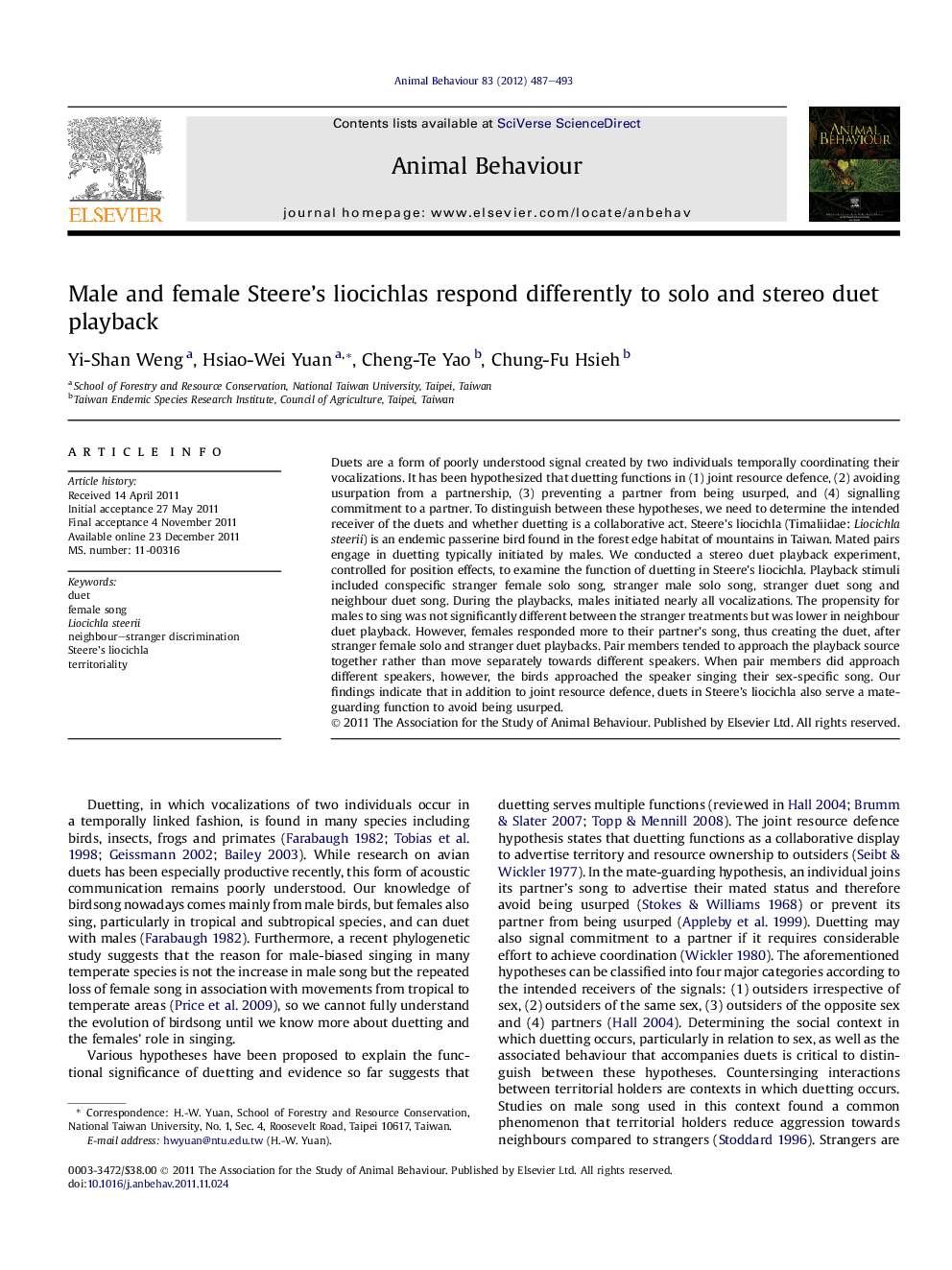| Article ID | Journal | Published Year | Pages | File Type |
|---|---|---|---|---|
| 2416728 | Animal Behaviour | 2012 | 7 Pages |
Duets are a form of poorly understood signal created by two individuals temporally coordinating their vocalizations. It has been hypothesized that duetting functions in (1) joint resource defence, (2) avoiding usurpation from a partnership, (3) preventing a partner from being usurped, and (4) signalling commitment to a partner. To distinguish between these hypotheses, we need to determine the intended receiver of the duets and whether duetting is a collaborative act. Steere's liocichla (Timaliidae: Liocichla steerii) is an endemic passerine bird found in the forest edge habitat of mountains in Taiwan. Mated pairs engage in duetting typically initiated by males. We conducted a stereo duet playback experiment, controlled for position effects, to examine the function of duetting in Steere's liocichla. Playback stimuli included conspecific stranger female solo song, stranger male solo song, stranger duet song and neighbour duet song. During the playbacks, males initiated nearly all vocalizations. The propensity for males to sing was not significantly different between the stranger treatments but was lower in neighbour duet playback. However, females responded more to their partner's song, thus creating the duet, after stranger female solo and stranger duet playbacks. Pair members tended to approach the playback source together rather than move separately towards different speakers. When pair members did approach different speakers, however, the birds approached the speaker singing their sex-specific song. Our findings indicate that in addition to joint resource defence, duets in Steere's liocichla also serve a mate-guarding function to avoid being usurped.
► Stereo duet playback on Steere's liocichla, Liocichla steerii. ► Pair members tended to approach the playback speaker together. ► Females engaged in duetting more in playbacks with same-sex songs of strangers. ► Steere's liocichla duets function in both joint resource defence and mate guarding.
